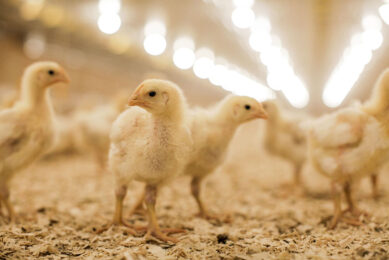Ancient enzymes perform great
A Waikato, New Zealand based research team have successfully reconstructed an enzyme from a bacterium that lived almost a billion years ago and which is seven times more active as its modern descendants.
Waikato University Biological Sciences Associate Professor Vic Arcus says the group, which included scientists from Otago University and Hamilton biotechnology company ZyGEM, was interested in the fundamental properties of enzymes.
"There has been a lot of speculation in the last 10 years about how enzymes might evolve over time," he says. "Did ancient organisms live in really hot environments, or did they live at ambient temperature, and what were their enzymes doing under those conditions?"
The enzyme the research group studied, known as LeuB, is fundamental to the cell’s metabolism, and is found in virtually all bacteria.
Post-doctoral researcher Dr Jo Hobbs, who performed the majority of the research, began by comparing the amino acid sequences of the LeuB enzyme variants in closely related species of the genus Bacillus which live in either hot, moderate or cold environments.
From this, the group were able to work out what the ancestral sequence of the enzyme was likely to have been. And by cross-referencing other bacterial proteins against a previously established molecular clock they could calculate that this ancestral form would have occurred in a bacterium that lived about 680 million years ago.
"We then tried our luck and went back a bit further and made another ancestor, by looking at a wider range of Bacillus species. And then we went back again, and in the end we produced four ancestral forms of varying ages. The oldest was 960 million years, and that would have been the last common ancestor of all Bacillus," Dr Arcus says.
Today various species of the genus are found in almost every environment. "If you go to hot springs you’ll find Bacillus living around the margins; if you go to Antarctica or to the desert you’ll find them. And they’re in your garden as well."
Modifying bacteria
The next step of the Marsden-funded research was to synthesise the ancestral gene and insert it into a modern bacterium, which could then generate copies of the ancient proteins.
These held a few surprises. The oldest form was unusually stable, and seven times more active than the fastest modern enzyme.
"That’s unusual, because one of the rules of thumb is that normally you sacrifice activity for stability,” Dr Arcus explains.
“For the enzyme to be so active and so stable is unusual, and that says something interesting about the ancient bacterium that would have harboured it. You wouldn’t normally want an enzyme to be so incredibly robust because it would be constantly switched on, so the suggestion is this organism probably lived in a very hot, very inhospitable environment, to require an enzyme like that."
Further back in time
Dr. Arcus says they now want to further back in time, closer to the first appearance of bacteria more than 3.5 billion years ago. He suspects the earliest bacteria would have had a smaller range of enzymes which were able to perform a broader range of tasks.
He is also interested in the potential applications of fast, stable enzymes.
“As luck would have it, there are lots of practical uses for enzymes with those properties, so we’re looking at all the different places where enzymes are used—in the pharmaceutical industry, or cooking, for example.”
The research was recently published in the Journal of Molecular Biology and Evolution.











